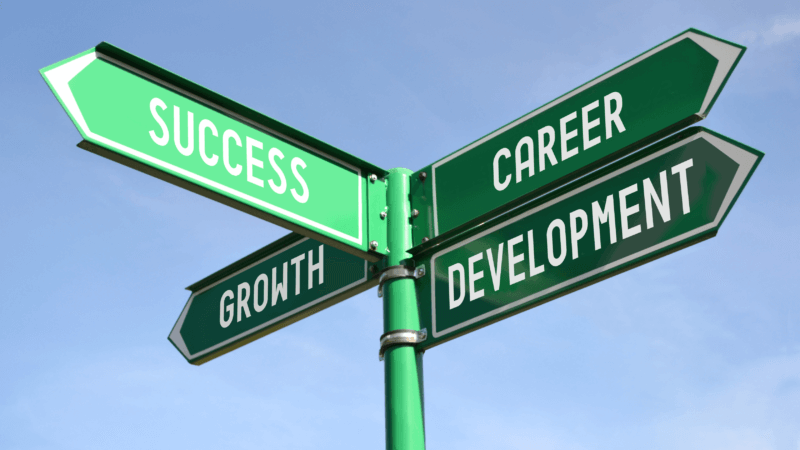How employee experience solutions ultimately improve customer experience
April 7, 2023
It may seem counterintuitive at first, but a successful customer experience (Cx) solution does not start with the people who pay you for your services – it begins with your employees. The reality of the situation is that your Cx directly reflects how your workers are feeling. While it is especially true in customer-facing roles that a disgruntled team member can cause you to lose immediate business, the same is true when the supply chain suffers from rampant staff shortages or delays as a result of unresolved issues.
Drawing parallels between your Cx and employee experience (Ex) solutions requires empathy throughout all stages of the organization. When business leaders show they care for their people by making decisions based on employee insights, those workers feel engaged and empowered to care for their customers down the line. If Cx professionals, or executive teams, do not know how it feels to work for their business they are not tuned into the challenges employees face which ultimately affects their bottom line. If your leadership team is looking for some quick wins with high-impact, consider:
- More transparent communications between managers and employees.
- Digitizing workflows when possible & providing space for open collaboration.
- Develop a solid DEI culture to foster creativity, fresh perspectives, and understanding between people of different races, abilities, ages, genders, religion, sexual orientation, and other diverse backgrounds.
- Embrace employee listening tools & close the loop on hot-topic issues.
- Engage with and publicly recognize high-performing teams
- Provide upskilling opportunities.
- Demonstrate corporate social responsibility
Sometimes it really is this simple; the best way to provide a top-notch customer experience is to provide a world-class employee experience first. Your workers, especially those on the frontline or retail stores, are the ones that keep the lights on, the floors swept, the loading bay clear, and ultimately the shelves stocked for your customers to shop to begin with. If there is a hiccup anywhere down the line in that supply chain due to poor employee satisfaction, you can bet a flurry of customer complaints will follow.
This isn’t exclusive to retail workers with direct customer access either, those in the supply chain, transportation, and manufacturing who never see a customer face-to-face can still affect that experience. Customers don’t suddenly develop unrealistic expectations when the supply chain breaks, they are simply reacting to disruptions in what has been normalized. In a culture which demands mass output we often forget that there are people behind everything we buy. It becomes the responsibility of business leaders to humanize and give a voice to those who make it all possible – the employees.
As consumers, we look to build human connections with employees everywhere we go and a single interaction can make or break our perception of an organization – but how do we reliably assign a dollar value to that sentiment? We’ve found that companies that focus on Ex experiences tend to perform well on Cx metrics as well, meaning that satisfaction is something that should be looked at holistically rather than in a silo.
How does improved employee experience contribute to better business outcomes?
Results from the International Data Corporation’s (IDC) Enterprise Resiliency and Spending (FERS) survey in 2021 highlights key findings surrounding Customer Experience, Enterprise Intelligence, and how Employee Experience solutions ultimately affect the bottom line. This IDC report found that 85% of respondents agreed that they saw improvements to their customer experience, including customer satisfaction, as well as increased revenue after bolstering their employee experience and engagement initiatives. Digging deeper, 62% of respondents identified a defined relationship between Ex and Cx, stating that the impact was “large” or “significant” and measurable. Over half of those surveyed claimed that customer satisfaction has become a primary metric when evaluating employee productivity.
This is where things can get tricky! Exemplary productivity metrics don’t necessarily equate to a phenomenal employee experience as there are plenty of factors that can boost output. However, we have found that an improved quality of your Ex naturally increases productivity in the vast majority of cases. While monetary incentives, pizza in the breakroom, or flexible scheduling can lead to more output – sustainable, organic production stems from your employees finding deeper value in their work. The best way to do that is by ensuring that everyone feels that their voice is heard, that managers close the loop on hot-button issues, and that your frontline can track meaningful change deriving from their feedback.
A 2022 report from the Harvard Business Review (HBR) took a look at three years of in-depth employee and financial data from over 1,000 businesses across the U.S. They found that if an organization could move from the bottom quartile to the top quartile in each of the employee experience metrics included in the report, that they would increase their revenue beyond 50%, with profits trailing close behind that number. This was especially true with customer-facing workers in retail storefronts where full-time, tenured representatives with more experience generated more sales – from $57 per person-hour worked to $87 per person-hour. Additionally, operating profits showed that improvements to the Ex result in a 45% increase in profits per person-hour, from $41 to $59.
The results painted a very clear picture – positive changes to the employee experience such as reducing turnover and continued career development are a strong driver of revenue and profits. Simply put, a great employee experience leads to happier customers, especially in retail roles, which gives your organization the competitive advantage.
Happy customers don’t exist without happy employees
Customers are central to the success of any business, so much so that they have become the obsession of some of today’s most prolific corporate leaders. Jeff Bezos, CEO of Amazon, writes, “You can be competitor-focused, you can be product-focused, you can be technology-focused, you can be business-model-focused… But in my view, obsessive customer-focus is by far the most protective of Day 1 vitality.” For a long time that ideology meant sacrificing the welfare of employees throughout the supply chain, from warehouse pickers to site managers, just to provide a high-quality consumer experience. Through years of refinement reaching toward the perceived perfection of an “always-on” supply chain, those same leaders lost sight of the human element behind the wheel. When decisions made in board rooms by professionals in suits to drive profits began to adversely affect drivers, packers, and retail representatives – profits plateaued we all began to wake up to something we should have realized all along. It is impossible to have happy customers without happy employees.
Glassdoor reports a strong statistical link between employee experience and customer satisfaction amongst some of the world’s biggest brands. While company leaders strive to put their customers first, research has shown that a clear way to achieve that is by building a foundation with highly engaged employees. The Harvard Business Review took a deep dive into Glassdoor metrics, looking at the opinions of 300,000 U.S. customers across 293 enterprise companies spanning 13 unique industries. They took a look at the average Glassdoor rating (1-5 stars) in addition to the The American Customer Satisfaction Index (ACSI, 0-100) score annually for a 10-year period between 2008 and 2018. The results drew a clear parallel between employee experience and customer satisfaction. Let’s buckle up and get a bit technical here. HBR found that each one-star employee satisfaction rating on Glassdoor correlates to a 1.3-point out of 100 improvement to Cx scores on the ACSI scale. This number is twice as large in industries with direct customer-facing roles such as retail, food service, healthcare, or sales where the ACSI score jumped 3.2 points for every 1-star improvement.
Alright, so there’s a clear connection between Cx and Ex, so what? A study published in the Journal of Marketing titled, “Customer Satisfaction and Stock Prices.” indicates that each 1% improvement to an organization’s ACSI score is associated with a 4.6% increase in overall stock market value. This means that for every one-star improvement on Glassdoor employer ratings, leaders should expect a 7.8% to 18.9% improvement in long-term market valuation depending on the industry.
All of this to say that if you want to develop a world-class, customer-first strategy then building a best-in-class employee experience is a necessary precondition for success – something successful CEOs, revenue teams, and HR professionals can’t ignore much longer.
Improve CX with WorkStep: the frontline employee experience platform
Empower your frontline workers with powerful continuous listening tools. Improve customer experience and satisfaction.
Tom Goyette, Product Marketing Manager | tom.goyette@workstep.com
Tom Goyette is a Product Marketing Manager at WorkStep. With experience in start-up and enterprise level SaaS and eCommerce organizations, Tom excels at managing and creating content, marketing, and analytics. Tom believes people are at the center of every great organization and is eager to share stories that highlights the value of the employee voice.



